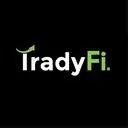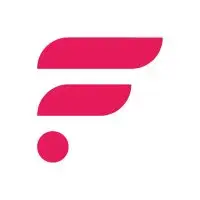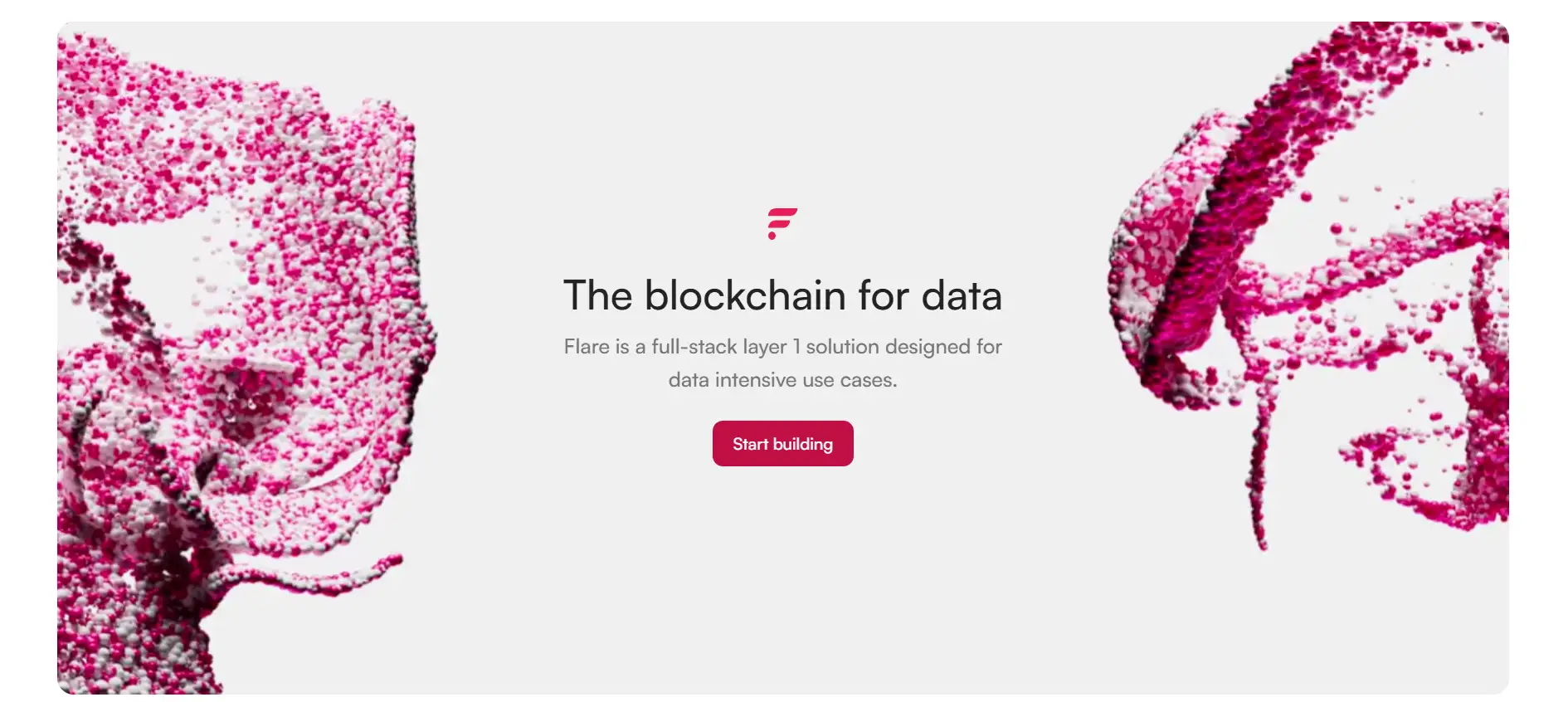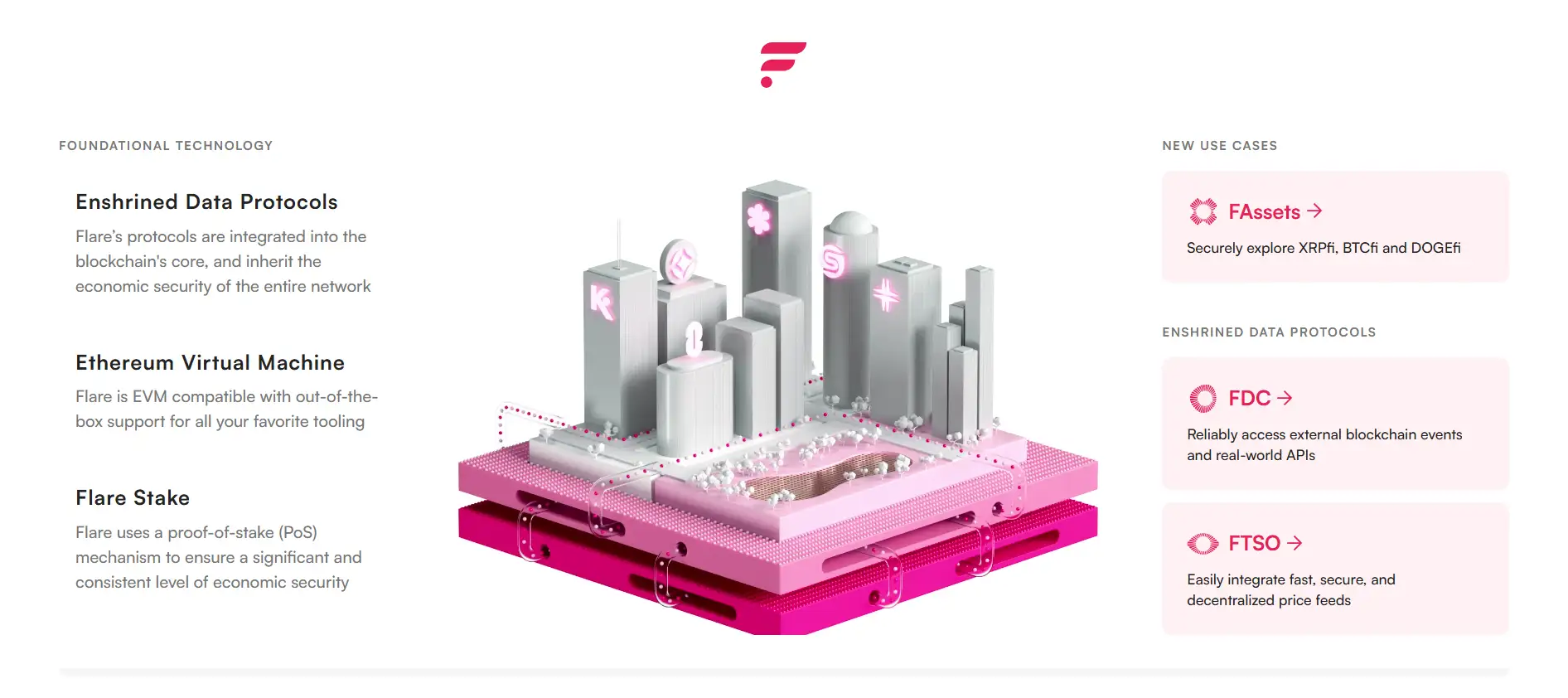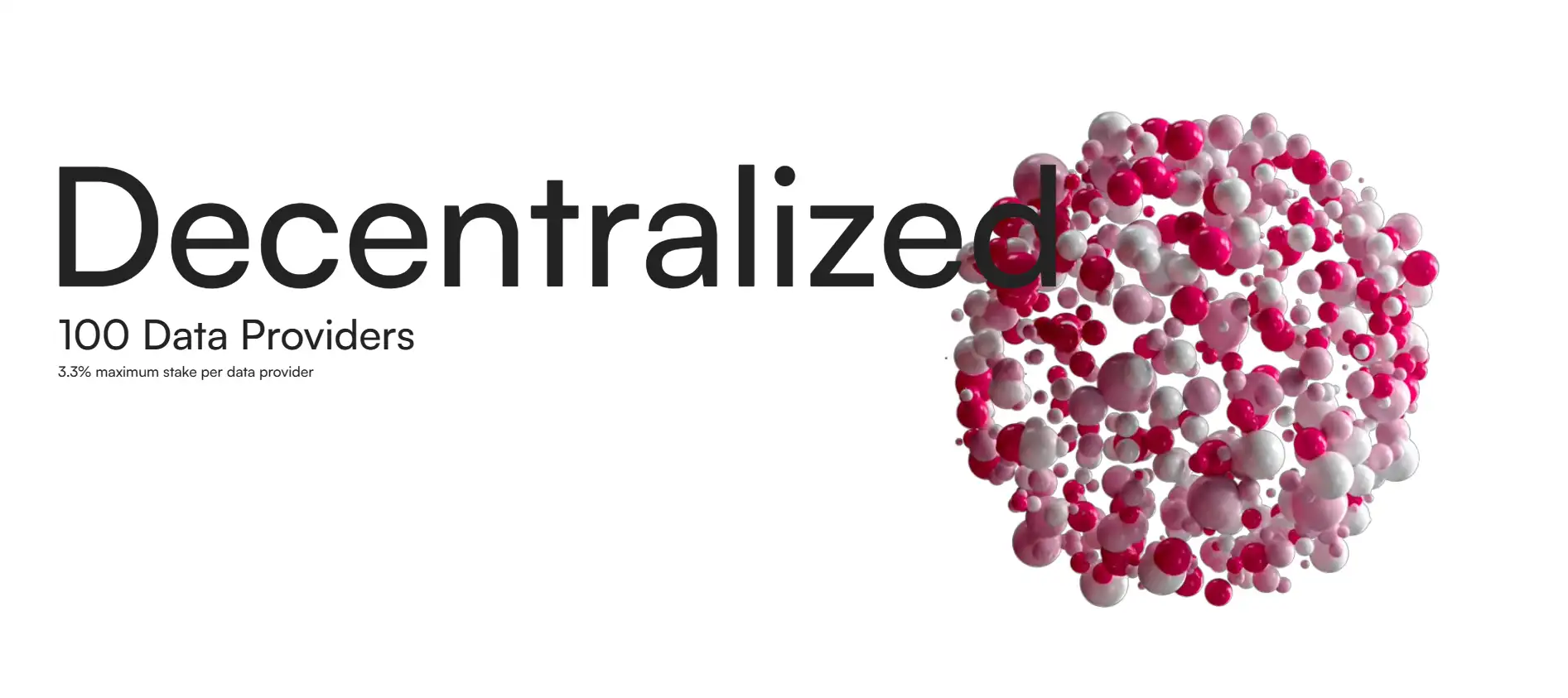About Flare Network
Flare Network is a powerful Layer 1 blockchain designed to bring real-world and cross-chain data on-chain, enabling advanced decentralized applications that were previously impossible to build. With native integrations like the Flare Time Series Oracle (FTSO) and Flare Data Connector (FDC), Flare redefines what it means to be a data-centric chain. Its mission is to unlock the potential of assets like XRP, BTC, and DOGE within smart contracts, without requiring centralized intermediaries.
With a deeply integrated EVM environment, fast block times, and an extensive staking and governance infrastructure, Flare Network empowers developers and communities to build innovative DeFi, gaming, and Web3 tools using real-time off-chain and on-chain data. The network is secured by a proof-of-stake model, supported by over 100 independent data providers, and serves as a high-integrity foundation for the next generation of blockchain applications.
Flare Network was conceived to solve one of the blockchain industry's biggest limitations: the lack of seamless and secure access to external data. Unlike oracles added as external layers, Flare embeds data capabilities directly into its protocol. Through core-native solutions like the Flare Time Series Oracle (FTSO) and the Flare Data Connector (FDC), the platform ensures that smart contracts on Flare can utilize real-world data and blockchain events with speed, accuracy, and security.
The platform is fully EVM compatible, meaning developers can migrate or launch Ethereum-based applications with no need for rewrites. But Flare goes further by creating new possibilities through enshrined infrastructure that provides block-latency price feeds, verifiable API calls, and event monitoring across other chains. It introduces FAssets—a system enabling tokens like XRP, BTC, and DOGE to be minted into decentralized formats (FXRP, FBTC, etc.), unlocking lending, staking, and cross-chain DeFi while maintaining non-custodial control.
Launched with a vision of broad decentralization and accessibility, Flare has grown rapidly, with thousands of participants, over 300,000 community events, and strong institutional collaborations including Google Cloud, Hypernative, and Elliptic. Its staking model involves FLR holders who can delegate to data providers, supporting security while earning rewards.
Competitors to Flare include Chainlink (oracle layer), The Graph (indexing layer), and L1 chains like Polygon and Arbitrum. However, Flare is differentiated by natively integrating decentralized data and bridging solutions at the protocol level—offering speed, reliability, and scalability in one platform.
Flare Network offers a wide range of features and benefits that distinguish it from other blockchains:
- Enshrined Oracle Infrastructure: Flare integrates FTSO and FDC at the core protocol level, providing fast, decentralized access to price feeds and cross-chain data.
- FAssets System: Mint non-smart contract assets like XRP, BTC, and DOGE into decentralized, usable forms (FXRP, FBTC, etc.) without relying on custodians.
- Cross-Chain Compatibility: Access data and tokens from multiple chains in one seamless platform—ideal for building advanced dApps and DeFi protocols.
- EVM Compatibility: Use standard Ethereum tooling (Solidity, MetaMask, Remix) to build or migrate projects with minimal effort.
- High-Performance Architecture: Enjoy fast finality (1.8s block time), scalable infrastructure, and robust staking mechanisms that support network security.
- Data Provider Delegation: Delegate FLR to 100+ independent data providers to earn rewards and participate in decentralized governance.
- Institutional Partnerships: Collaborations with Google Cloud, Elliptic, and others boost Flare’s credibility and expand its enterprise reach.
Getting started with Flare is straightforward for both developers and everyday users:
- Create a Wallet: Use any EVM-compatible wallet like MetaMask or Rabby to interact with the Flare blockchain. Set the network to Flare or Songbird.
- Acquire FLR Tokens: You can obtain FLR from supported exchanges and wrap them to earn FlareDrops and delegate to data providers.
- Delegate & Stake: Use the Flare Portal to delegate your FLR to trusted data providers and earn staking rewards. This helps secure the network and gives you governance power.
- Mint FAssets: Bring assets like XRP, BTC, or DOGE into DeFi by minting FAssets on Flare. Follow the minting steps in supported DApps with agents and Core Vault liquidity.
- Explore DApps: Engage in DeFi applications like staking, lending, or prediction markets. Use FXRP or other FAssets to unlock new yield opportunities.
- For Developers: Access smart contract libraries and sample code in Solidity, Python, Rust, and JavaScript through the Flare Network Developer Hub.
- Join the Community: Participate in governance, Discord discussions, and global Flare events. Stay up to date via the newsletter and official blog.
Flare Network FAQ
Flare Network introduces FAssets, a system designed to bring tokens like XRP, BTC, and DOGE into DeFi while retaining their native security. By minting FAssets such as FXRP on Flare or Songbird, users gain access to DeFi opportunities like staking, lending, and yield farming. The process is powered by decentralized agents and collateralized with a mix of FLR, stablecoins, and native assets. FAssets maintain over-collateralization and are managed via the Core Vault for enhanced liquidity and safety. Explore the full system at Flare Network.
The Flare Time Series Oracle (FTSO) provides real-time, decentralized price feeds directly integrated into the Flare blockchain. With updates every 1.8 seconds and backed by around 100 independent data providers, FTSO offers secure and manipulation-resistant data used across DeFi applications. It supports up to 1,000 feeds across multiple asset types and is free to access, enabling developers to build reliable financial tools. Learn more at Flare Network.
The Flare Data Connector (FDC) delivers secure and verifiable off-chain data from both blockchains and internet APIs to smart contracts on Flare. FDC uses a system of attestations, Merkle trees, and decentralized data providers to ensure the integrity of each data point. It enables use cases like cross-chain interactions and real-world data feeds for DeFi, all while being enshrined in the Flare protocol for maximum security. Get started with FDC at Flare Network.
FAssets go beyond simple wrapping by maintaining non-custodial control and introducing decentralized minting via agents who post collateral on Flare or Songbird. Unlike wrapped tokens that rely on centralized custodians, FAssets are secured through over-collateralization, time-locked vaults, and transparent protocol rules. The system supports yield generation and composability across DeFi while preserving the original asset’s utility. Discover more about FAssets at Flare Network.
Flare Network provides a full-stack, EVM-compatible environment for DeFi builders. Developers can use familiar tools (Solidity, JavaScript, Python) alongside native protocols like FTSO for price feeds and FDC for external data. The platform supports rapid execution with 1.8-second block times, a robust validator set, and scalable architecture. Access developer resources and start building at Flare Network.
You Might Also Like


